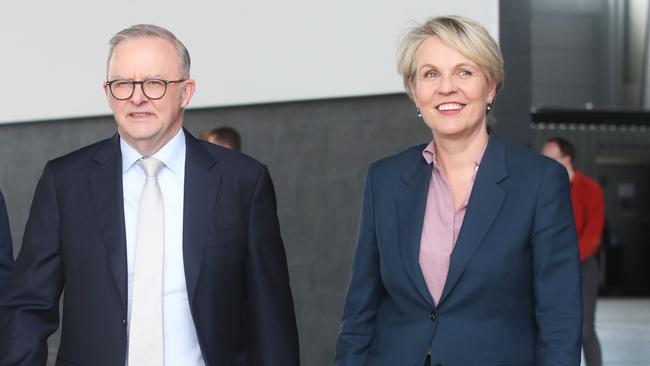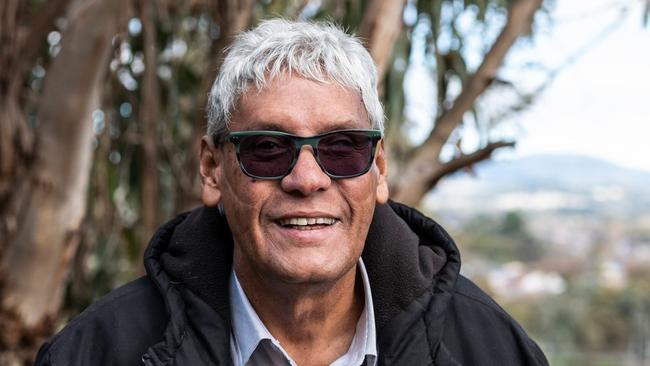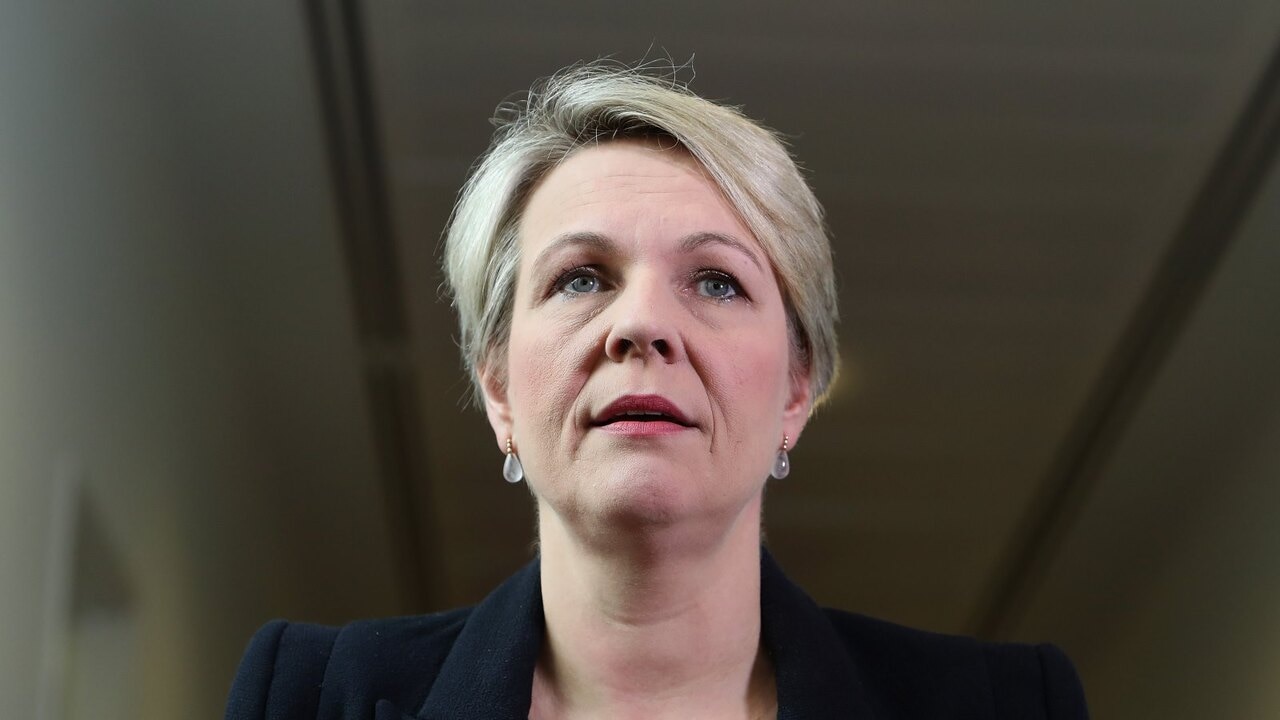Hindmarsh Island bridge expert debunks Blayney gold mine ‘blue-banded bee’ tale
The anthropologist whose research helped to debunk the ‘fabricated’ secret women’s business at the Hindmarsh Island Royal Commission has cast serious doubt on claims of a dreaming story about the blue-banded bee at the proposed Blayney gold mine.

The anthropologist whose research helped to debunk the “fabricated” secret women’s business at the Hindmarsh Island Royal Commission has cast serious doubt on claims of a dreaming story about the blue-banded bee at the proposed Blayney gold mine – which Tanya Plibersek used to block the billion-dollar project.
Philip Clarke, a historian whose work has for decades supported Indigenous groups in their land rights claims, said on Wednesday the blue-banded bee story was “highly unlikely” as The Australian confirmed that Wiradjuri authority Uncle Neil Ingram told Ms Plibersek in February that the story was not true.
The Australian has obtained portions of Mr Ingram’s emphatic evidence to the eleventh-hour inquiry convened by Ms Plibersek which, together with Dr Clarke’s expert advice, raises further questions about whether the minister was duped into blocking the mine on the strength of claims by a dissident Indigenous group.`
Mr Ingram rejected the claims of Bathurst-based anti-mine group Wiradyuri Traditional Owners Central West Aboriginal Corporation. “(The) Bathurst group stating that they are custodians of the blue banded bee story is false,” he said in his evidence to Ms Plibersek.
“As a senior Wiradjuri elder and, coming from a traditional Galari clan, (I) have never heard of this story, never seen any ochre art works, rock engravings or traditional dances symbolising the blue-banded bee story.”
Dr Clarke said there was no record of the blue-banded bee as a totemic ancestor of the Wiradjuri before a story in the media in 2022, when the approvals process for Regis’s proposed mine was well advanced.
As a consultant, Dr Clarke wrote three reports in three years about Wiradjuri mythology, ceremonial cycles and tradition for Regis. In his first report in 2021 – before mine opponents mentioned the blue-banded bee dreaming – Dr Clarke examined all public records and turned up evidence of Wiradjuri belief in supreme beings such as Baiame, Daramulan and Muni Burrebean but nothing about the blue-banded bee and nothing relating specifically to the proposed mine site. He concluded the site of the proposed mine was not of special cultural significance.

“Recently, claims have been made in the public domain that the ‘blue-banded bee’ as a creation ancestor has a story that is relevant to headwaters of the Belubula River,” Dr Clarke said.
“In my opinion, this is highly unlikely since there is no record of any Wiradyuri group having such a totemic ancestor.
“As a cluster of non-colonial species that do not produce collectable honey, there is no recorded Aboriginal economic use for them, which, in my view, makes the blue-banded bee an unlikely candidate as a major totem.
“The origin of the blue-banded bees as a myth narrative is more likely than not to be recent, as the earliest accounts of the story appear in the media from early 2022.
“If this story was so culturally important, it is reasonable to conclude that it would have been mentioned much earlier during earlier consultations between Regis Resources and the local Aboriginal representatives. In a community environment, crucial cultural knowledge is shared in order to protect it.”
Dr Clarke was an expert witness at the 1995 Royal Commission into whether there was secret sacred women’s business at the site of a proposed bridge between the mainland and Hindmarsh Island in South Australia. His evidence, based on field work and an exhaustive review of ethnographic data, supported dissident Indigenous woman who said they had never heard of it.

In the case of the Blayney gold mine, it is the dissident Indigenous group that has the ear of the relevant minister, Ms Plibersek. The elected Indigenous body with cultural authority for the region – the Orange Land Council – has no objection to the gold mine. On Wednesday, the land council’s adviser Roy Ah-See said the credibility that Ms Plibersek gave to the mine opponents’ claims about the blue-banded bee dreaming was dangerous.
“Weaponising Aboriginal cultural heritage for environmental hidden agendas is always going to end in tears,” said Mr Ah-See, a former adviser on Indigenous affairs to former prime ministers Malcolm Turnbull and Scott Morrison.
“This makes a mockery of Aboriginal culture and heritage and our old people have got every right to be annoyed and upset when something isn’t genuine. When we need protection for sites that really are significant, it will make it so much harder.”
Orange Land Council is preparing to host the NSW Premier’s department and other land councils across NSW at a crisis meeting on October 30 about the ramifications of Ms Plibersek’s decision.
Mr Ah-See said elders such as Mr Ingram were deeply upset that their knowledge had been discounted.
Mr Ingram is custodian of the Three Brothers dreaming story, a cautionary tale about the consequences of breaking Wiradjuri lore. In a short film by Jack Steele, Mr Ingram calls the Three Brothers dreaming “my story” and narrates it, explaining how a fatal rivalry between the brothers connects Mount Panorama, Mount Canobolas and Mount Macquarie.
The Wiradyuri corporation attempted to link the Three Brothers dreaming story to the proposed mine site near Blayney but Mr Ingram’s son Greg – who also gave evidence to the special hearing – said Wiradjuri storylines “never went anywhere near” that site.
Greg Ingram called the blue-banded bee dreaming “unfounded and untrue”, despite it being detailed to Ms Plibersek in a late submission from a Wiradjuri elder associated with WTOCWAC in December 2023. Ms Plibersek would later argue a mural of the blue-banded bee in Bathurst independently corroborated the account.
The Australian revealed this week that the artist behind it, Birrunga Wiradyuri, had consulted with the WTOCWAC when creating the artwork.
The Australian also revealed the Wayne Weaver Foundation, a charity with which Mr Wiradyuri serves as a patron, was financially supported by WTOCWAC, and both he and his primary business partner Suzanne Goodchild had been members of the Indigenous corporation until recently.
The blue-banded bee dreaming story has not appeared in any of the six ethnographic studies seen by mine owner Regis Resources. Bathurst Council said on Monday it was not aware of the dreaming story before it commissioned the mural.





